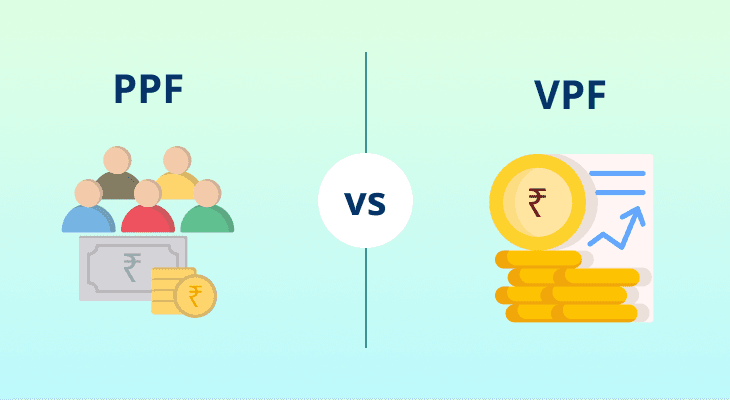
Table of content
- Retirement Planning Explained
- How Retirement Planning Works
- Advantages of Retirement Plans
- Why is a Retirement Plan Important?
- Retirement Planning Stages
- Factors to Consider While Planning Retirement
- Types of Retirement Plans
- Steps to Retirement Planning
- Where Should You Invest for Retirement?
- How Much Does Retirement Require?
- Wrapping It Up
What Is Retirement Planning and How It Works?
Retirement planning is an essential aspect of financial management. It entails ensuring you have sufficient funds to maintain your lifestyle and cover unexpected expenses in your golden years. Understanding the best retirement plans and knowing how to invest in retirement funds effectively can make a significant difference in your post-retirement life.
Retirement Planning Explained
Retirement marks the end of your professional career and the beginning of a phase where you rely on your savings and investments. It’s a period meant for relaxation and pursuing interests that you might have set aside during your working years. However, to fully enjoy retirement, you need to have a robust financial plan in place to support your lifestyle without the regular income from employment.
Planning for retirement involves setting financial goals, estimating expenses, and saving and investing money to ensure you can achieve these goals. It’s about creating a strategy to accumulate the necessary funds to support your desired lifestyle post-retirement.
How Retirement Planning Works
Retirement planning works by evaluating your current financial situation, estimating future needs, and implementing a savings and investment strategy to bridge the gap. This involves calculating how much you need to save regularly and where to invest to maximise returns while minimising risks. Retirement planning involves several steps, like:
- Setting Goals: Determine your retirement age and the lifestyle you wish to maintain.
- Estimating Expenses: Calculate your post-retirement expenses, including living costs, healthcare, travel, and hobbies.
- Evaluating Current Financial Status: Assess your current savings, investments, and any existing debts.
- Determining Savings Requirements: Calculate how much you need to save regularly to achieve your retirement goals.
- Choosing Investment Options: Select suitable investment vehicles based on your risk tolerance and financial goals.
- Monitoring and Adjusting: Regularly review and adjust your retirement plan to stay on track with your goals
Advantages of Retirement Plans
Retirement plans offer numerous benefits:
- Financial Security: Ensures a steady income stream during retirement.
- Tax Benefits: Many retirement plans provide tax deductions and exemptions.
- Compounding Returns: Investments in retirement funds benefit from compounding, growing your corpus over time.
- Inflation Protection: Proper planning helps you protect your savings from inflation.
- Peace of Mind: Knowing you have a financial cushion gives you peace of mind and allows you to enjoy your retirement without financial worries.
Why is a Retirement Plan Important?
A retirement plan is crucial because it:
- Provides Financial Independence: Ensures you are not financially dependent on others in your later years.
- Helps Maintain Your Lifestyle: Allows you to continue living comfortably without compromising on your lifestyle.
- Prepares You for Unexpected Expenses: Ensures you have funds to cover unexpected medical or other expenses.
- Reduces Stress: Gives you peace of mind knowing your future is secure.
Retirement Planning Stages
An effective retirement planner considers the different phases of your life and tailors the strategy accordingly. Since financial needs evolve over time, your approach to retirement planning should also adjust with age and income levels.
Here are the main stages of retirement planning:
- Young Adult (20s–early 30s)
At this stage, your primary advantage is time. Even small investments in retirement plans can grow significantly through compounding. Focus on building disciplined saving habits and start with basic instruments like EPF, PPF, or SIPs in equity mutual funds.
- Early Midlife (30s–early 40s)
This is when income usually increases along with responsibilities like home loans or child education. Use a retirement planner tool to estimate your retirement corpus, and diversify into other types of retirement plans like NPS, annuities, and balanced mutual funds. Increasing your SIP amount yearly can also boost your long-term wealth.
- Later Midlife (45–60)
As retirement approaches, shift focus from aggressive growth to preservation. Start reducing equity exposure and move towards stable income assets like debt mutual funds, senior citizen savings schemes, or fixed income plans. Health insurance becomes crucial at this stage.
Each phase has its own role in building a solid retirement foundation. Timely action across all stages is key to achieving financial independence.
Factors to Consider While Planning Retirement
- Current Savings and Investments: Evaluate your existing savings and investments.
- Expected Life Span: Consider your life expectancy to ensure your funds last throughout your retirement.
- Inflation Rate: Account for the rising cost of living and ensure your savings can keep up with inflation.
- Healthcare Costs: Anticipate medical expenses, which typically increase with age.
- Desired Lifestyle: Determine the lifestyle you wish to maintain post-retirement, including travel, hobbies, and leisure activities.
Types of Retirement Plans
Some of the popular and best retirement plans include:
- Public Provident Fund (PPF): A government-backed savings scheme offering tax benefits and risk-free returns. Investments in PPF are safe, provide an attractive interest rate, and qualify for tax deductions (up to ₹ 1.5 Lakhs) under Section 80C of the Income Tax Act. The interest earned and the maturity amount are also exempt from tax.
- Employee Provident Fund (EPF): A mandatory savings scheme for salaried employees, providing a lump sum on retirement. Both the employee and employer contribute to the EPF, and the accumulated amount earns interest. The EPF also offers tax benefits under Section 80C.
- National Pension System (NPS): A voluntary retirement savings scheme offering market-linked returns. NPS allows you to invest in equity and debt instruments, providing flexibility and potential for higher returns. Contributions to NPS qualify for tax deductions under Section 80CCD.
- Mutual Funds: Investment in equity or debt funds to create a retirement corpus. Mutual funds offer the potential for higher returns but come with market risks. Equity funds are suitable for long-term growth, while debt funds provide stability and regular income.
- Annuities: Insurance products that provide regular income post-retirement. Annuities can be purchased with a lump sum payment, and the insurer provides guaranteed income for a specified period or for life. They offer financial security but may have lower returns compared to other investment options.
- Senior Citizens Savings Scheme (SCSS): A government-backed savings scheme for those over 60, offering regular income and tax benefits. SCSS provides a high interest rate and the invested amount (up to ₹ 1.5 Lakhs) qualifies for tax deductions under Section 80C.
Steps to Retirement Planning
As mentioned earlier, planning for retirement involves a series of carefully evaluated and executed steps. These include:
- Set Retirement Goals: Define your retirement age and lifestyle goals. Determine the kind of lifestyle you want to lead and the associated costs.
- Estimate Expenses: Calculate your post-retirement expenses, including living costs, healthcare, travel, and leisure activities. Consider inflation and other factors that may impact your expenses.
- Evaluate Current Financial Status: Assess your current savings, investments, and any existing debts. Identify any gaps in your financial plan.
- Determine Savings Requirements: Calculate how much you need to save regularly to achieve your retirement goals. Use retirement calculators and financial planning tools to estimate the required savings.
- Choose Investment Options: Select the best retirement plans and investment vehicles suited to your risk appetite and financial goals. Diversify your investments to balance risk and return.
- Monitor and Adjust: Regularly review and adjust your retirement plan to stay on track. Monitor the performance of your investments and make necessary changes to ensure you meet your goals
Where Should You Invest for Retirement?
- Government Schemes: PPF, EPF, SCSS, and NPS offer safety and tax benefits. These schemes are backed by the government, providing security and attractive returns.
- Mutual Funds: Equity and debt mutual funds provide growth and stability. Equity funds offer potential for higher returns, while debt funds provide regular income and stability.
- Fixed Deposits: Bank and corporate FDs offer fixed returns with low risk. Fixed deposits provide guaranteed returns and are a safe investment option for risk-averse investors.
- Annuities: Provide a steady income stream post-retirement. Annuities offer financial security and guaranteed income for life or a specified period.
- Real Estate: Investing in property can offer rental income and capital appreciation. Real estate can provide a stable source of income and potential for growth in value over time.
How Much Does Retirement Require?
A common question every retirement planner must address is: How much money do I really need for retirement? The answer depends on various personal factors including lifestyle, inflation, healthcare needs, and life expectancy.
To estimate the retirement corpus, start by calculating your current monthly expenses. Adjust these for inflation and multiply by the number of years you expect to live after retirement. For instance, if you need ₹ 50,000 per month today and retire in 20 years, you may need close to ₹ 1.5 lakh monthly post-retirement due to inflation.
A popular thumb rule in retirement planning is the 25x rule which states that your target corpus should be 25 times your expected annual expenses in retirement. So if you need ₹ 12 lakh per year, your retirement corpus should ideally be ₹ 3 crore. But this rule is not set in stone.
You can try a free online retirement calculator, like the one offered by m.Stock, to get a better idea of how much money you would need for a secure retired life. Further, m.Stock’s retirement planner also helps you understand how much you invest regularly to reach that goal.
Don’t forget to factor in one-time expenses such as medical emergencies, travel goals, or major life events. Use retirement planner calculators to model different scenarios and stay updated.
Planning early, investing consistently, and reassessing your plan periodically helps ensure your retirement years are financially stress-free and comfortable.
Wrapping It Up
To summarise, planning for retirement is crucial for ensuring a secure and comfortable future. By understanding the importance of retirement plans, their advantages, and the steps involved, you can make informed decisions that align with your financial goals. Remember, retirement planning is not just about saving money; it’s about making wise investment choices and preparing for any eventuality. Seeking expert advice can further enhance your retirement strategy, helping you navigate complex financial landscapes and tailor a plan that best suits your needs and aspirations. Ensure you start early, stay informed, and periodically review your plan for the best outcomes.
FAQ
What types of investments suit a retirement portfolio?
A well-balanced retirement portfolio may include large-cap stocks, hybrid mutual funds, NPS, PPF, EPF, debt mutual funds, annuities, and senior citizen savings schemes. The right mix depends on your age, risk tolerance, and retirement horizon.
Can late starters still build a retirement corpus?
Yes, even if you start late, focused and disciplined investing can help build a decent retirement corpus. You may need to contribute more aggressively, cut unnecessary expenses, and consider options like downsizing or delaying retirement if needed.
How should I adjust my strategy for early retirement goals?
For early retirement, start planning and saving early. Invest more in high-growth instruments initially, such as equity mutual funds. Also, build a larger corpus to account for a longer retirement phase and ensure sufficient health and life insurance.
How do I calculate the retirement corpus I need?
Start by estimating your post-retirement monthly expenses, adjust for inflation, and consider how long you may live after retirement. Multiply the expected annual expense by 25 as a rough estimate. Online retirement planner calculators, like the one offered by m.Stock, can provide a more accurate figure.
What is retirement planning
Retirement planning involves creating a strategy to save and invest money to ensure financial security during retirement. It includes setting goals, estimating expenses, and choosing suitable investment options.
Why is retirement planning important?
It ensures financial independence, helps maintain your lifestyle, and prevents you from becoming a financial burden on your family post-retirement.
What are the best retirement plans in India?
Public Provident Fund (PPF), Employee Provident Fund (EPF), National Pension System (NPS), Senior Citizens Savings Scheme (SCSS), and mutual funds are some of the best retirement plans in India.
How much should I save for retirement?
The amount varies based on your retirement goals, estimated expenses, and current savings. A financial advisor can help you determine the exact amount.
What is the National Pension System (NPS)?
NPS is a voluntary retirement savings scheme in India offering market-linked returns. It allows you to invest in equity and debt, providing flexibility and tax benefits.
When should I start retirement planning?
The earlier, the better. Starting early allows you to take advantage of compounding returns and build a substantial retirement corpus over time.
What are the tax benefits of retirement plans?
Many retirement plans like PPF, EPF, and NPS offer tax deductions under Section 80C of the Income Tax Act, helping reduce your taxable income.
Can I withdraw money from my PPF account before maturity?
Partial withdrawals are allowed after the completion of 5 financial years from the end of the year in which the initial subscription was made.
How does inflation impact retirement planning?
Inflation reduces the purchasing power of money over time. Your retirement plan should account for inflation to ensure you have sufficient funds to maintain your lifestyle.
Is it safe to invest in mutual funds for retirement?
Mutual funds can be a good option for retirement planning, offering potential for higher returns. However, they come with market risks, so it’s essential to choose funds based on your risk tolerance and financial goals.


